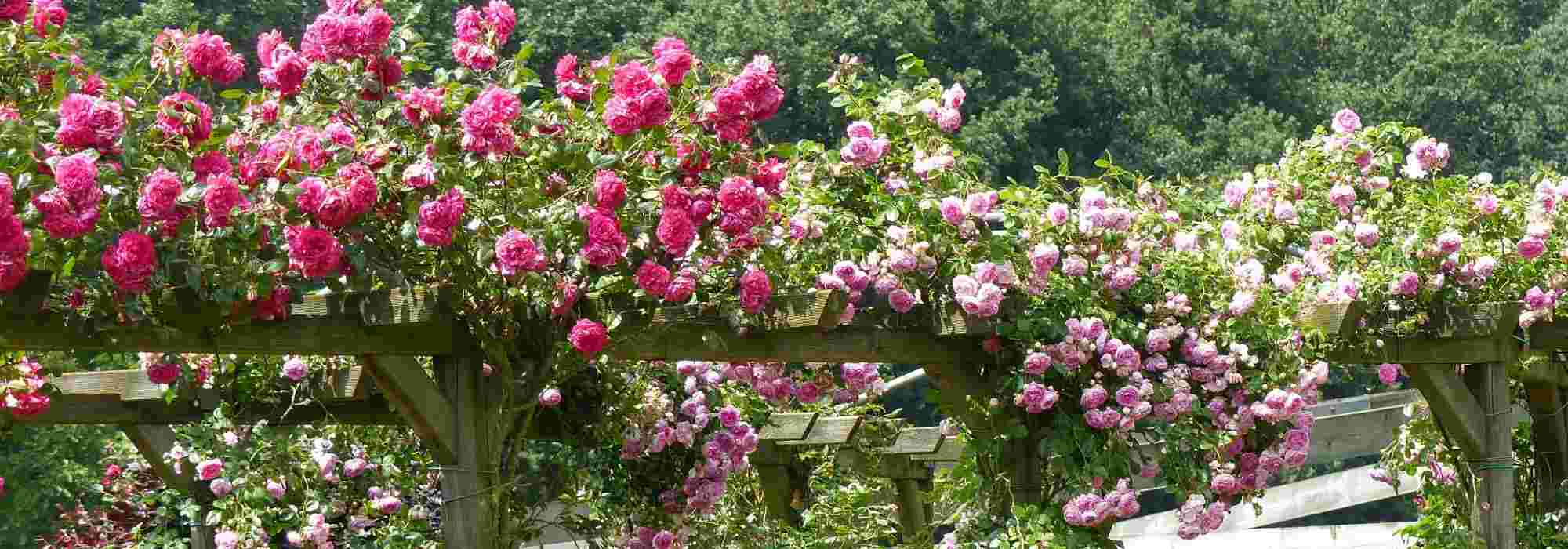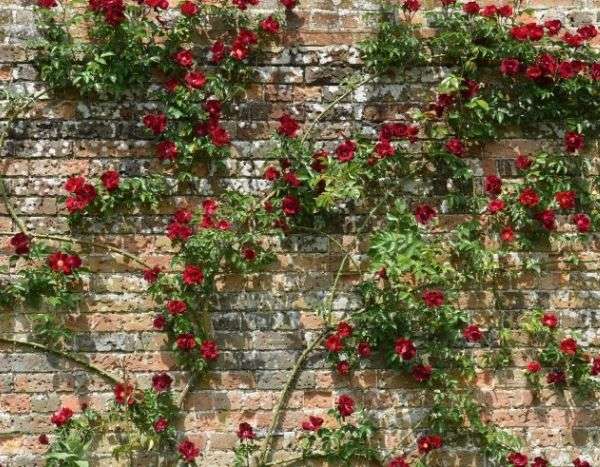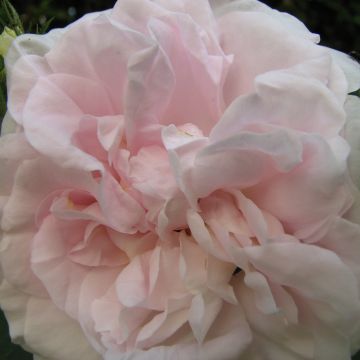

Rosa 'Aloha' - Climbing Rose from 'Max' Series


Rosa 'Aloha' - Climbing Rose from 'Max' Series


Rosa 'Aloha' - Climbing Rose from 'Max' Series
Rosa 'Aloha' - Climbing Rose from 'Max' Series
Rosa Climbing Max ® Aloha ® 'KORwesrug'
'KORwesrug'
I am very disappointed, the flowering is indeed not the same rose. Therefore, it does not match the expected color and spoils the harmony of the location. I must uproot it and find another one that corresponds to my initial request!" Analysis and revision: "I am very disappointed, the flowering is indeed not the same rose. Therefore, it does not match the expected color and spoils the harmony of the location. I must uproot it and find another one that corresponds to my initial request!" The translation accurately captures the meaning and context of the original text. There are no spelling or grammatical errors, and the language used maintains the same tone as the original.
Marie Eve, 06/10/2022
Special offer!
Receive a €20 voucher for any order over €90 (excluding delivery costs, credit notes, and plastic-free options)!
1- Add your favorite plants to your cart.
2- Once you have reached €90, confirm your order (you can even choose the delivery date!).
3- As soon as your order is shipped, you will receive an email containing your voucher code, valid for 3 months (90 days).
Your voucher is unique and can only be used once, for any order with a minimum value of €20, excluding delivery costs.
Can be combined with other current offers, non-divisible and non-refundable.
Home or relay delivery (depending on size and destination)
Schedule delivery date,
and select date in basket
We guarantee the quality of our plants for a full growing cycle, and will replace at our expense any plant that fails to recover under normal climatic and planting conditions.
Description
The 'Aloha' climbing rose or 'KORwesrug' is a creation by the German rose breeder Kordes, distinct from the other 'Aloha', which is also a climbing rose but with pink flowers. This rose, created by Kordes, charms with its perpetual flowering in shades of orange and pink, sometimes with a touch of red. It has a generous and charming flowering, composed of fully petaled roses with a fruity fragrance. It is not very tall but vigorous, making it suitable for small gardens and container gardening. Its foliage, a beautiful dark green, is resistant to diseases. This variety is also known for its hardiness and robustness. And its roses, which remain attractive even in the rain, hold up well in a vase.
The 'Aloha' climbing rose or 'KORwesrug' is part of the Climbing Max series, a line of climbing roses developed in Germany by Kordes. These versatile varieties are best when most long shoots are trained horizontally. They reach 2 to 2.50 metres (7 to 8 feet) and are stunning on trellises, fences, walls, arches, or obelisks. These roses form magnificent flowering pyramids left free and planted in groups of 3.
This 'Aloha' rose, introduced in 2003, belongs to the complex family of cluster-flowered roses. It is a sarmentous rose with a flexible habit and thorny stems, reaching a height between 2 and 2.50 metres (7 and 8 feet) with a spread of 80 cm (32in) to 1 metre (3 feet), depending on the growing conditions. Its deciduous foliage, a glossy dark green, is exceptionally healthy and perfectly enhances the attractive colour of the flowers. These roses, measuring 8 to 10 cm (3 to 4in) in diameter, are full of imbricated petals arranged in an old-fashioned style. The colour palette includes apricot, pink, salmon pink, and pink-red. It blooms abundantly from May to June to October, as long as it doesn't lack water in summer. Its roses are clustered in bouquets of 5 to 10 units. They have a strong fragrance, particularly in hot weather.
The 'Aloha' rose by Kordes can be grown as a climber or a bush, depending on the preference of each gardener. It allows for creating magnificent displays throughout the summer and requires very little maintenance, apart from regular watering during hot weather and prolonged drought. It is best not to prune it too much. Pair it with another small climbing rose with white flowers, for example, Alaska or Opalia climbing rose, or combine it with easy-to-grow large-flowered clematis like 'Etoile Violette' or 'Blue River'. Aloha can also be successfully associated with the Westerland rose or used as a substitute.
Rosa 'Aloha' - Climbing Rose from 'Max' Series in pictures




Plant habit
Flowering
Foliage
Botanical data
Rosa
Climbing Max ® Aloha ® 'KORwesrug'
Rosaceae
'KORwesrug'
Cultivar or hybrid
Planting and care
The 'Aloha' rose by Kordes adapts to any soil, even heavy or sandy, provided the planting is well cared for and does not lack water or nutrients. Plant it in well-prepared and drained ordinary soil in a sunny or semi-shaded location. Plant it in autumn, never when it freezes.
The branches that are two years old are the most floriferous. Reducing the stems that bloomed the previous year to 3 or 4 buds or pruning them to 15 cm (6in) is useful. The new strong stems will be trained, and the old ones will be removed if necessary. Fairly hardy, this rose can withstand -20 °C (- 4°F), and if, despite everything, the branches freeze to the ground after a harsh winter, this climbing rose will regrow from the base in spring. Removing dead wood in winter and fading flowers may be useful if fruit formation is not desired. If necessary, light pruning can be done in spring after the risk of frost. One can also let the liana roses grow freely if there is enough space.
If you plant a climbing or rambling rose next to a living tree, the root system of the rose will compete with that of the already established tree. To control watering, here's a tip: plant the rose in a large container with a perforated bottom at the base of the tree. The tree roots will not penetrate the container for at least a year. Remove the container after one year, for example, by cutting one side without disturbing the root system of the rose. The rose will have had time to develop its root system deeply and will be more resistant.
Roses may appear stained or unsightly at the end of summer. However, it is a natural phenomenon that doesn't harm their development.
Planting period
Intended location
Care
Planting & care advice
-
, onOrder confirmed
Reply from on Promesse de fleurs
Similar products
Haven't found what you were looking for?
Hardiness is the lowest winter temperature a plant can endure without suffering serious damage or even dying. However, hardiness is affected by location (a sheltered area, such as a patio), protection (winter cover) and soil type (hardiness is improved by well-drained soil).

Photo Sharing Terms & Conditions
In order to encourage gardeners to interact and share their experiences, Promesse de fleurs offers various media enabling content to be uploaded onto its Site - in particular via the ‘Photo sharing’ module.
The User agrees to refrain from:
- Posting any content that is illegal, prejudicial, insulting, racist, inciteful to hatred, revisionist, contrary to public decency, that infringes on privacy or on the privacy rights of third parties, in particular the publicity rights of persons and goods, intellectual property rights, or the right to privacy.
- Submitting content on behalf of a third party;
- Impersonate the identity of a third party and/or publish any personal information about a third party;
In general, the User undertakes to refrain from any unethical behaviour.
All Content (in particular text, comments, files, images, photos, videos, creative works, etc.), which may be subject to property or intellectual property rights, image or other private rights, shall remain the property of the User, subject to the limited rights granted by the terms of the licence granted by Promesse de fleurs as stated below. Users are at liberty to publish or not to publish such Content on the Site, notably via the ‘Photo Sharing’ facility, and accept that this Content shall be made public and freely accessible, notably on the Internet.
Users further acknowledge, undertake to have ,and guarantee that they hold all necessary rights and permissions to publish such material on the Site, in particular with regard to the legislation in force pertaining to any privacy, property, intellectual property, image, or contractual rights, or rights of any other nature. By publishing such Content on the Site, Users acknowledge accepting full liability as publishers of the Content within the meaning of the law, and grant Promesse de fleurs, free of charge, an inclusive, worldwide licence for the said Content for the entire duration of its publication, including all reproduction, representation, up/downloading, displaying, performing, transmission, and storage rights.
Users also grant permission for their name to be linked to the Content and accept that this link may not always be made available.
By engaging in posting material, Users consent to their Content becoming automatically accessible on the Internet, in particular on other sites and/or blogs and/or web pages of the Promesse de fleurs site, including in particular social pages and the Promesse de fleurs catalogue.
Users may secure the removal of entrusted content free of charge by issuing a simple request via our contact form.
The flowering period indicated on our website applies to countries and regions located in USDA zone 8 (France, the United Kingdom, Ireland, the Netherlands, etc.)
It will vary according to where you live:
- In zones 9 to 10 (Italy, Spain, Greece, etc.), flowering will occur about 2 to 4 weeks earlier.
- In zones 6 to 7 (Germany, Poland, Slovenia, and lower mountainous regions), flowering will be delayed by 2 to 3 weeks.
- In zone 5 (Central Europe, Scandinavia), blooming will be delayed by 3 to 5 weeks.
In temperate climates, pruning of spring-flowering shrubs (forsythia, spireas, etc.) should be done just after flowering.
Pruning of summer-flowering shrubs (Indian Lilac, Perovskia, etc.) can be done in winter or spring.
In cold regions as well as with frost-sensitive plants, avoid pruning too early when severe frosts may still occur.
The planting period indicated on our website applies to countries and regions located in USDA zone 8 (France, United Kingdom, Ireland, Netherlands).
It will vary according to where you live:
- In Mediterranean zones (Marseille, Madrid, Milan, etc.), autumn and winter are the best planting periods.
- In continental zones (Strasbourg, Munich, Vienna, etc.), delay planting by 2 to 3 weeks in spring and bring it forward by 2 to 4 weeks in autumn.
- In mountainous regions (the Alps, Pyrenees, Carpathians, etc.), it is best to plant in late spring (May-June) or late summer (August-September).
The harvesting period indicated on our website applies to countries and regions in USDA zone 8 (France, England, Ireland, the Netherlands).
In colder areas (Scandinavia, Poland, Austria...) fruit and vegetable harvests are likely to be delayed by 3-4 weeks.
In warmer areas (Italy, Spain, Greece, etc.), harvesting will probably take place earlier, depending on weather conditions.
The sowing periods indicated on our website apply to countries and regions within USDA Zone 8 (France, UK, Ireland, Netherlands).
In colder areas (Scandinavia, Poland, Austria...), delay any outdoor sowing by 3-4 weeks, or sow under glass.
In warmer climes (Italy, Spain, Greece, etc.), bring outdoor sowing forward by a few weeks.

















































